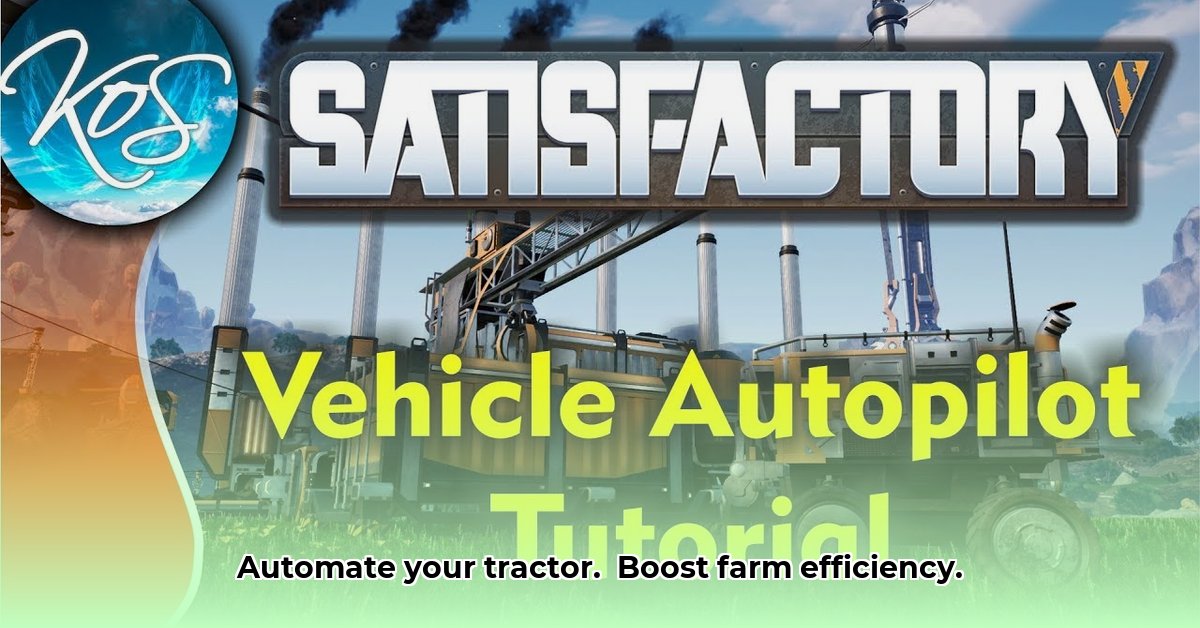
Satisfactory Tractor Autopilot: Driving Efficiency to the Next Level
Farming is hard work. Long hours, demanding conditions, and the constant pressure to maximize yields can take their toll. But what if technology could alleviate some of that burden? Tractor autopilots offer a remarkable opportunity to boost efficiency and precision, transforming how we approach farming. But what truly defines a satisfactory autopilot system? It's not just about fancy features; it's about delivering real-world results, saving you time, money, and stress. This guide will help you understand what to look for and how to get the most out of this groundbreaking technology. For more in-depth information, check out this helpful resource: Auto Steer Systems.
Understanding the Magic Behind the Machine
A satisfactory tractor autopilot acts like a highly skilled, tireless co-pilot, guiding your tractor with incredible accuracy. It's a blend of GPS technology, sensors constantly monitoring the tractor's position, and powerful computer processing. This seamless integration ensures your tractor follows a precise path, minimizing overlaps and maximizing efficiency. Isn't that a compelling image?
What Makes an Autopilot Really Satisfactory?
Several factors contribute to a truly satisfying autopilot experience:
Unwavering Accuracy: RTK (Real-Time Kinematic) GPS is the gold standard, offering centimeter-level accuracy. This precision minimizes wasted resources (fuel, seeds, fertilizers) and maximizes output from each pass.
User-Friendly Design: A good autopilot system is intuitive and easy to install and set up. It should integrate seamlessly with your existing equipment, not create additional headaches.
Reliable Support: Technical issues can arise with any technology. A responsive support team is crucial for swiftly resolving problems and getting you back to work. Regular software updates are also essential for keeping your system running smoothly and introducing new helpful features.
Don't you agree that these three elements are crucial for a smooth farming operation?
Getting Your Autopilot Up and Running: A Step-by-Step Guide
Installing a tractor autopilot isn't rocket science, but it's best left to professionals unless you're mechanically inclined. Here's a general guide:
Professional Installation (Highly Recommended): A qualified technician ensures proper calibration and integration, maximizing performance from the start. This avoids potential costly errors and ensures optimal accuracy.
Precise Calibration: The technician meticulously aligns the autopilot system with your tractor's steering, ensuring commands translate perfectly into actions. This is vital for accurate field coverage.
Field Mapping: Use the autopilot's software to create digital maps of your fields, defining boundaries for each section. This prevents the tractor from straying off course.
Test Run: Before tackling large fields, start with a smaller test area to identify potential problems and ensure optimal performance. This test phase proves invaluable and prevents larger-scale issues.
Ongoing Monitoring and Fine-Tuning: Regularly monitor the autopilot's performance, make adjustments, and utilize software updates. Proactive maintenance ensures optimal long-term functionality.
The Upsides and Downsides of Tractor Autopilots: A Balanced View
Like any technology, tractor autopilots have both advantages and disadvantages:
| Advantages | Disadvantages |
|---|---|
| Increased efficiency | Substantial initial investment |
| Reduced input costs | Potential for technical glitches and downtime |
| Less operator fatigue | Requires specialized training and expertise |
| Improved accuracy and reduced overlaps | Dependence on reliable GPS signal |
| Consistent results | Ongoing maintenance and potential repair costs |
Finding the Right Autopilot for You
Choosing the right autopilot requires careful consideration of factors such as farm size, crops grown, budget, and technical expertise. Talking to other farmers and consulting experts is highly recommended to ensure a suitable choice. The right autopilot can significantly boost your productivity and profitability – thorough research and planning are key for a positive experience and ensuring the technology helps your bottom line. Remember, technology is constantly improving. Keep your eye on advancements!